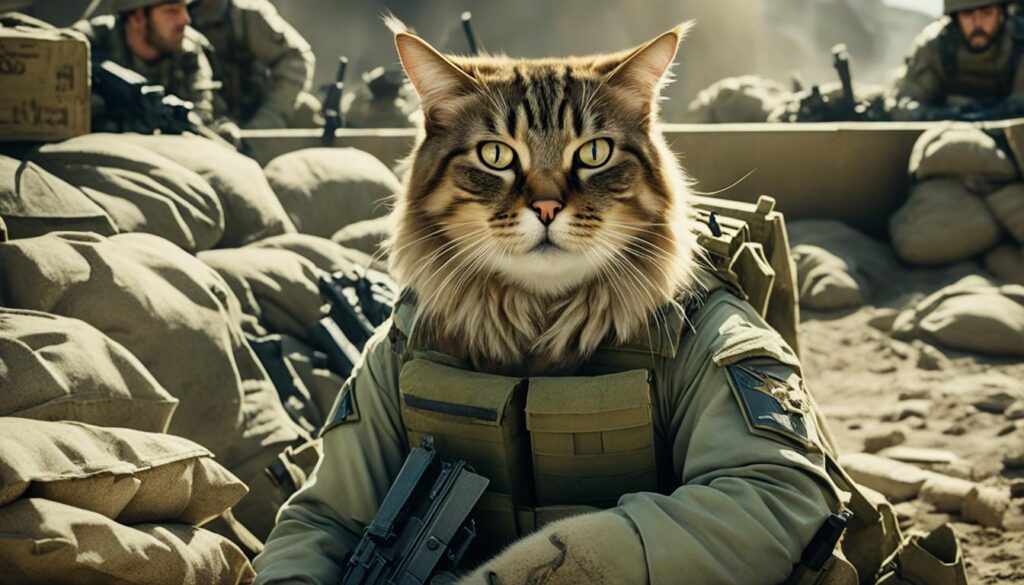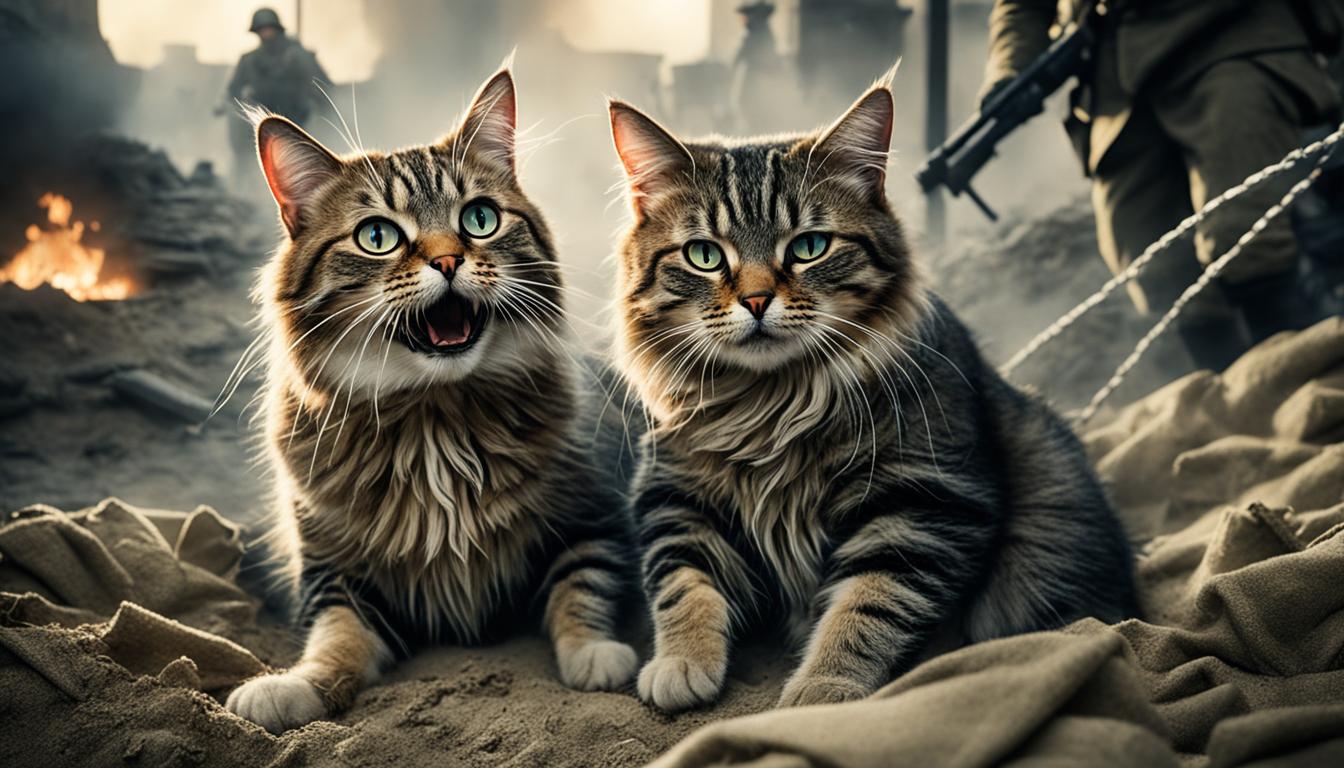During the harsh realities of war in World War I, cats played a crucial role in boosting the morale of soldiers in the trenches. These furry companions provided much-needed comfort and companionship to the brave men facing unimaginable hardships. The presence of WWI trench cats helped soldiers cope with the difficult conditions and maintain a sense of normalcy in an otherwise chaotic environment.
In addition to cats, various other animals such as dogs, homing pigeons, foxes, goats, lion cubs, and even raccoons served as pets and mascots throughout the war. These animals not only lifted the spirits of the soldiers but also provided practical benefits. Some cats, with their heightened sense of atmospheric pressure, could even detect bombs in advance, acting as early warning systems and saving countless lives.
Key Takeaways
- Cats were essential in boosting the morale of soldiers in WWI trenches
- They provided comfort and companionship during the harsh realities of war
- Various other animals also served as pets and mascots throughout the war
- Some cats could detect bombs in advance, acting as early warning systems
- The presence of animals helped soldiers maintain a sense of normalcy in chaotic times
The Role of Cats in the Trenches
Life in the trenches of World War I was a living nightmare for soldiers, who faced constant threats from enemy attacks, rampant diseases, and severe rat infestations. In an effort to combat these challenges, an estimated 500,000 cats were deployed throughout the trench systems along the Western Front.
The primary role of these feline companions was to control the burgeoning rodent population, which posed a significant risk to the health and well-being of the troops. By keeping the rat numbers in check, cats played a crucial role in disease prevention, limiting the spread of illnesses that could have decimated entire units.

Soldiers would often share portions of their rations with the cats, who quickly learned to stick around for the food and attention. As a result, many of these felines became unofficial mascots for their respective units, providing a much-needed boost to morale in the face of unimaginable adversity.
The cats tended to congregate around the living quarters of the troops, offering a source of comfort and a welcome distraction from the horrors of war. Between conflicts, soldiers would often spend time playing with and caring for their feline friends, finding solace in their companionship during the brief moments of respite in the trenches.
WWI Trench Cats as Early Warning Systems
Amidst the harrowing chemical warfare that characterized World War I, an unlikely hero emerged in the trenches: cats. These feline companions not only provided comfort and companionship to soldiers but also served a crucial role in detecting gas attacks. Cats were exceptionally sensitive to the nearly odorless and invisible toxic gases used against the Allied forces, making them an invaluable asset in the fight for survival.
When the enemy launched a gas attack, cats in the trenches would react almost instantaneously, exhibiting signs of distress and discomfort long before the soldiers themselves could detect the presence of the deadly gases. Their keen senses and rapid reactions served as an early warning system, alerting nearby troops to the imminent danger. Upon noticing the cats’ behavior, soldiers would quickly don their protective gear and seek safety, saving lives that might have otherwise been lost to the insidious effects of chemical warfare.
The sacrifices made by these brave felines cannot be overstated. While the exact number of cats that perished due to gas attacks remains unknown, their contributions undoubtedly saved countless soldier lives. By acting as sentinels against the silent and deadly threat of chemical warfare, these trench cats demonstrated the profound bond between humans and animals, even in the darkest of times.
The legacy of these heroic cats lives on, reminding us of the vital role they played in saving lives during one of the most devastating conflicts in human history. Their bravery and loyalty serve as a testament to the enduring spirit of companionship and the unbreakable bond between soldiers and their feline friends in the face of unimaginable adversity.
Notable Feline Heroes of WWI
Among the many brave cats that served alongside soldiers in the trenches of World War I, some stood out for their exceptional heroism and loyalty. One such feline was Pitouchi, a cat rescued and nursed back to health by Belgian officer Lt. Lekeux. Pitouchi became Lt. Lekeux’s loyal companion, following him everywhere and even saving his life by drawing German fire, allowing the lieutenant to escape with important maps.
Another famous cat, Simon, served aboard the HMS Amethyst from 1948 to 1949. Despite being wounded by a shell blast, Simon continued to perform his duties, disposing of many rats and keeping the ship’s morale high. For his bravery and dedication, Simon was awarded the PDSA Dickin Medal, which was established in 1943 to honor the military service of animals.
These feline heroes, along with many others, proved that cats were not just loyal companions but also valuable assets to the military during times of war. Their bravery and devotion to their human comrades exemplified the unbreakable bond between humans and their feline friends, even in the face of adversity. The stories of Pitouchi, Simon, and other courageous cats continue to inspire and remind us of the important role these animals played in military service.

Leave a Reply